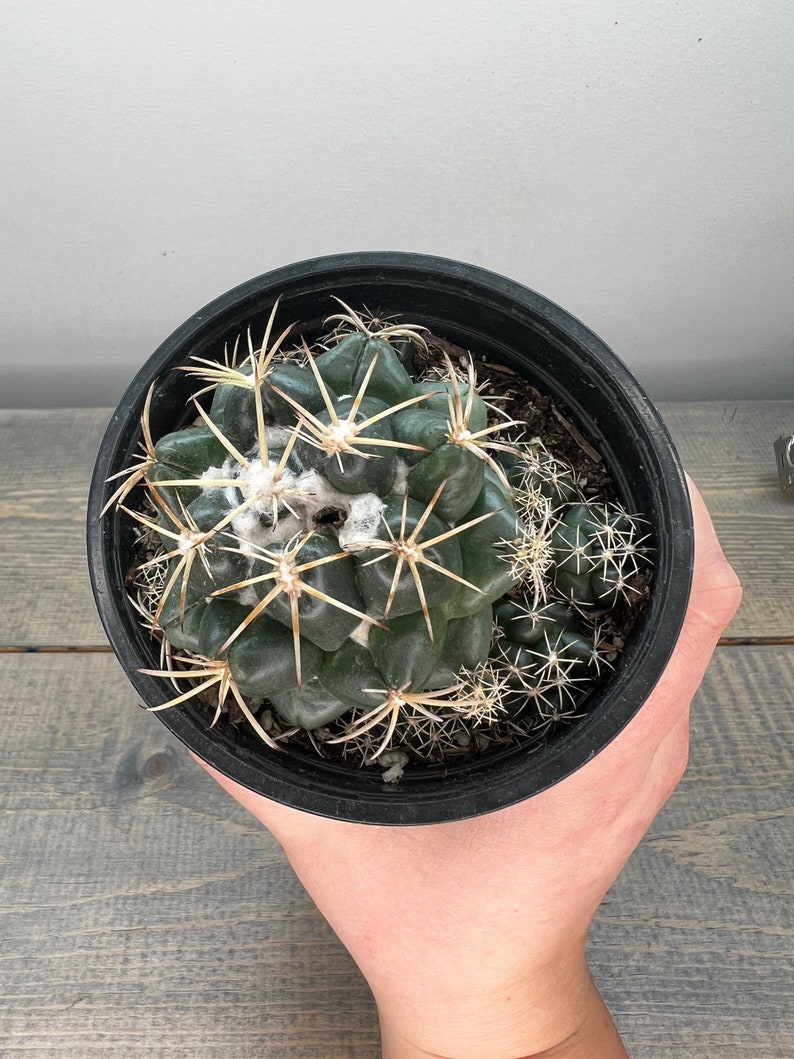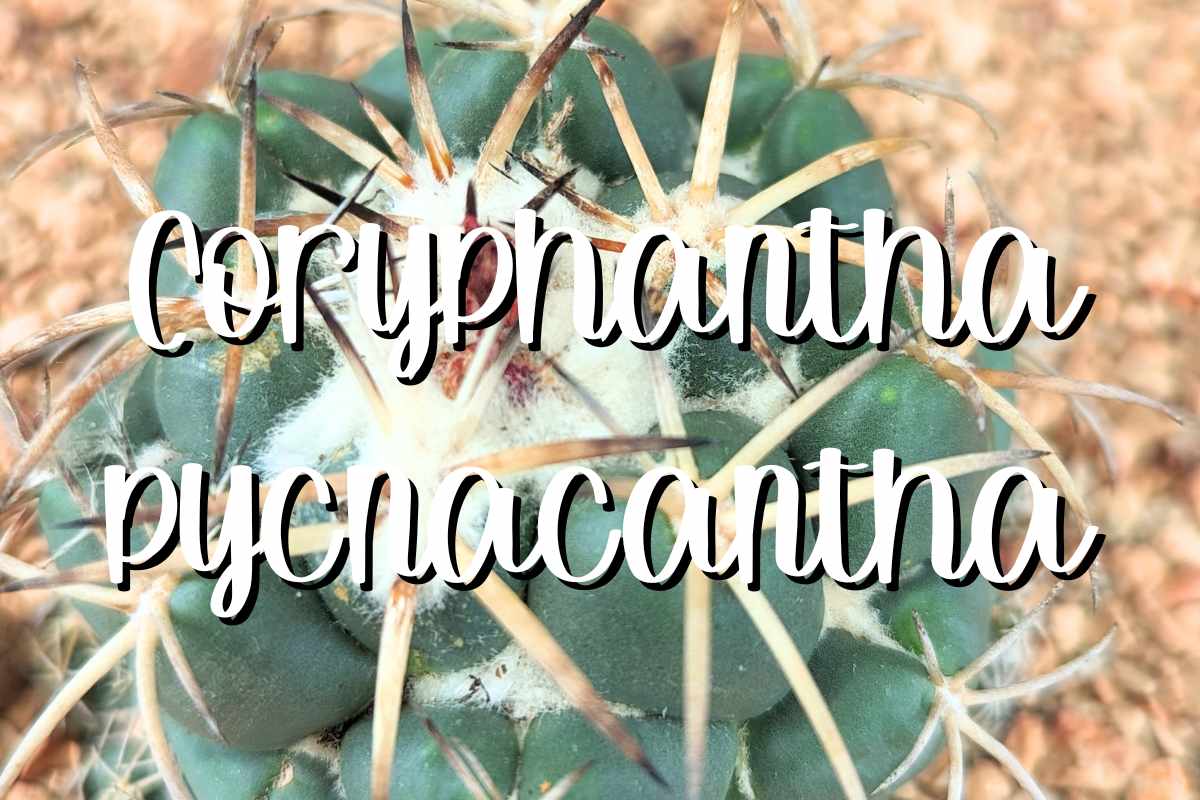The Coryphantha pycnacantha cactus, native to Mexico, is popular among plant enthusiasts for its unique features and relatively easy care routine. In this comprehensive guide, we will uncover everything you need to know about caring for your Coryphantha pycnacantha.
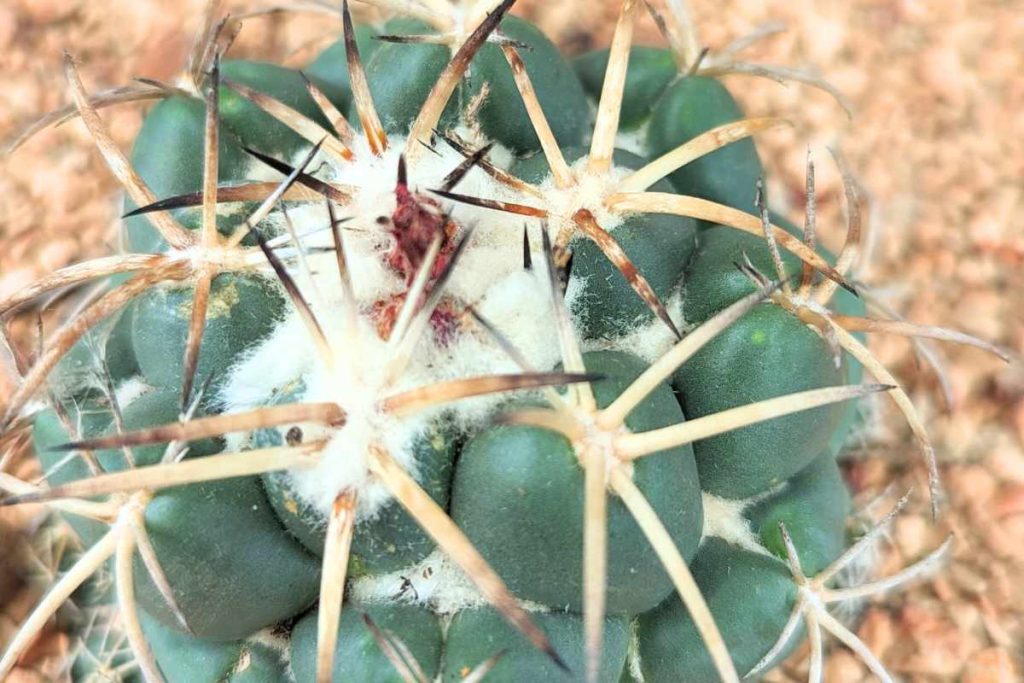
Dig in!
What is Coryphantha pycnacantha?
Coryphantha pycnacantha is a small cactus species known for its spherical body and stunning yellow flowers. Belonging to the family Cactaceae, this cactus is a native of Mexico and is often found in well-drained, sandy soils.
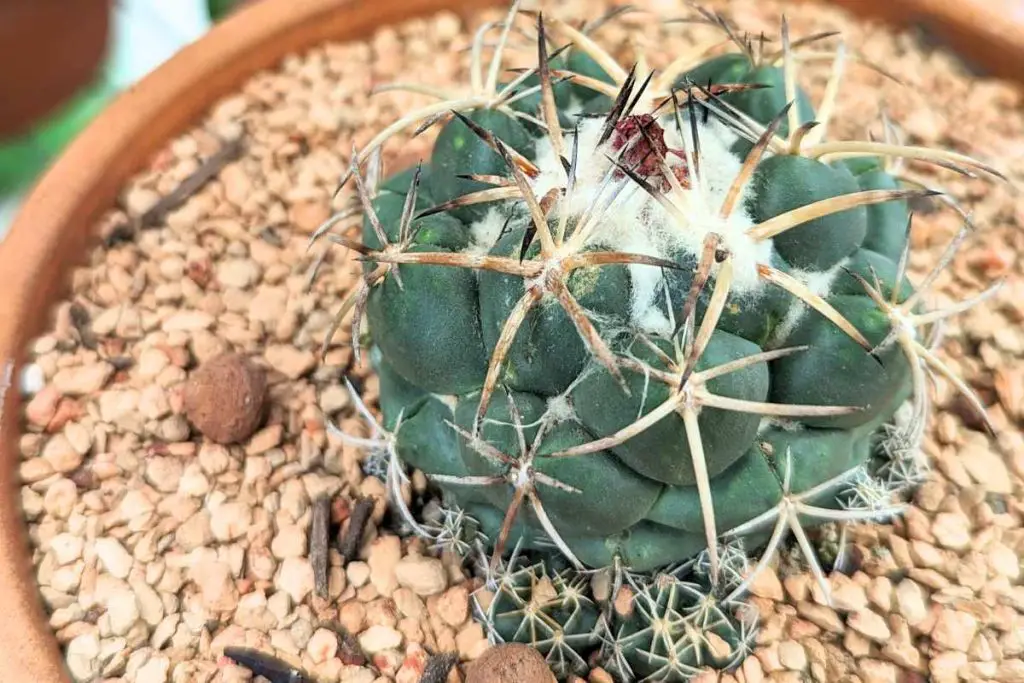
Common Names and Unique Adaptations
Also known as Coryphantha andreae, this plant is uniquely adapted to survive in arid conditions. It stores water in its fleshy body, allowing it to thrive even in drought-like situations.
Spines
The cactus’s spines serve multiple purposes. They provide shade to the plant, reducing water loss due to evaporation. They also deter animals from eating the cactus, protecting its valuable water stores.
Wool
The wool on the top of Coryphantha pycnacantha, and many other types of cacti, serves multiple purposes. Here are the key roles it plays:
- Protection from Sunlight: The woolly top helps to protect the cactus from harsh sunlight. It provides a layer of insulation that shields the plant from intense UV rays, which can cause sunburn and damage the plant’s tissues.
- Water Conservation: The wool helps to conserve water by reducing evaporation. In the arid environments where these cacti naturally grow, conserving every bit of moisture is crucial for survival.
- Protection from Predators: The wool, along with the cactus’s spines, can deter animals from eating the cactus. It adds an extra layer of defense against herbivores that might be tempted to munch on the succulent plant tissues.
- Flower Bud Development: The woolly top of a Coryphantha pycnacantha is also where the cactus’s flowers bloom. The wool provides a safe and protected space for the flower buds to develop.
So, while it might just look like a bit of fluff, the wool on a Coryphantha pycnacantha (and on other cacti) plays critical roles in the plant’s survival and reproduction.
Understanding Your Coryphantha pycnacantha
Appearance and Growth
Coryphantha pycnacantha is characterized by a spherical body that can reach up to 9 cm in diameter. Its apex is sunken and covered with wool, providing a unique visual appeal.
Flowering
One of the most exciting aspects of this cactus is its flowers. They are large, yellow, and have a daisy-like form. These flowers typically appear in summer and add a burst of color to the otherwise green and white cactus.
The blossoms of this cactus, like many cacti flowers, open during the day and close at night. The flowers also have a short lifespan. They bloom, stay open for a few days, and then wilt away. However, a healthy Coryphantha pycnacantha can produce several flowers throughout its blooming season.
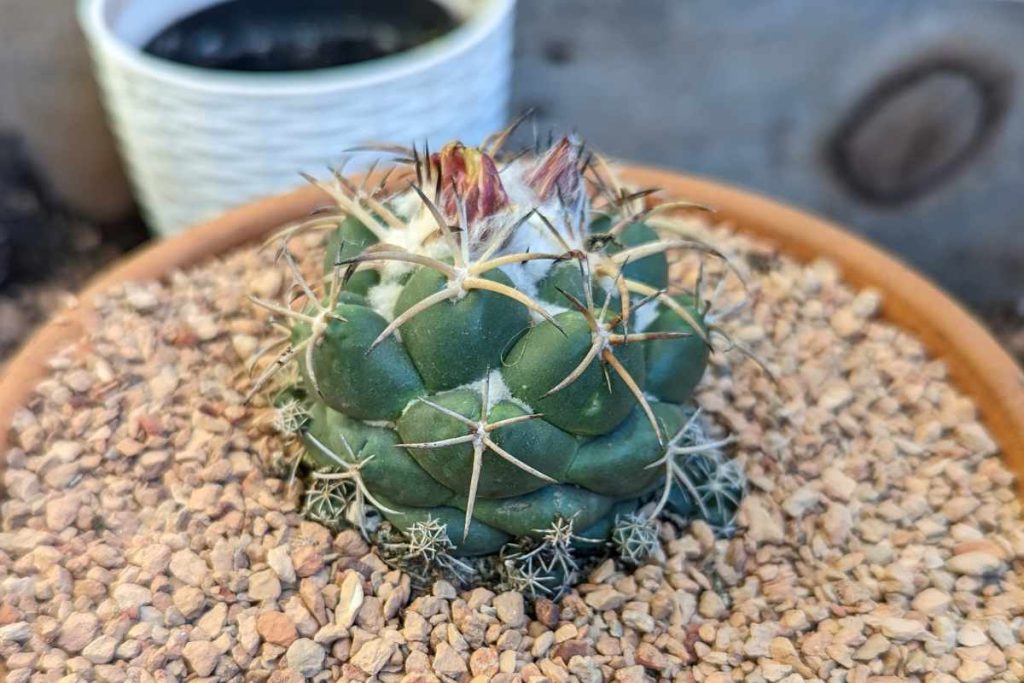
Essential Care Guidelines
Light and Temperature Requirements
Thriving in light shade exposure, Coryphantha pycnacantha avoids direct sun at noon. It can withstand temperatures up to 0 ºC, making it a hardy choice for a variety of climates.
Watering and Feeding
When it comes to watering, moderation is key. Always wait for the substrate to dry completely before the next watering. During winter, watering needs are minimal. For feeding, a mineral cactus fertilizer applied in early spring usually suffices.
Propagation and Pruning
How to Propagate Coryphantha pycnacantha
Propagation is typically achieved through seeds sown in spring, ensuring a new generation of these beautiful plants.
Pruning Tips
Interestingly, it does not require pruning, making it a low-maintenance choice for busy plant owners.
Troubleshooting Common Problems
Identifying Common Problems
One of the most common issues is overwatering, which can lead to root rot. Always ensure the substrate is dry before watering again.
Pests and Diseases
As with many succulents and cacti, this cactus can attract certain pests like mealy bugs, mites and aphids. Regular care and observation can help prevent infestations and keep the plant healthy.
Special Considerations
Indoor and Outdoor Cultivation
It can be grown both indoors and outdoors. However, care should be taken to ensure it has enough light and the correct temperature conditions.
Safety Concerns: Is Coryphantha pycnacantha Toxic?
While beautiful to look at, it should be handled with care due to its sharp spines. It’s not typically toxic to humans or pets, but it’s always a good idea to keep it out of reach of curious hands or paws.
Recognizing Dormancy in Coryphantha pycnacantha
Like many succulents, Coryphantha pycnacantha may go into a period of dormancy, especially during the winter months. Recognizing this dormancy is important to avoid overwatering andto adjust care routines accordingly.
The Story Behind the Name
The name Coryphantha comes from the Greek words ‘koryphe’, meaning ‘summit’ or ‘top’, and ‘anthos’, meaning ‘flower’. This reflects the unique characteristic of Coryphantha pycnacantha where the flowers bloom at the top of the plant.
Is this cactus on your wish list?
Click on the image below to buy it from a small business on Etsy!
